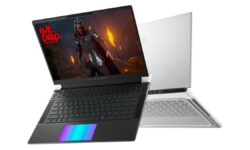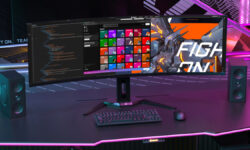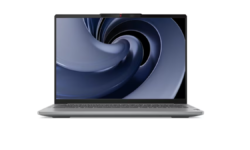MacBook Air 2018 vs. MacBook Air 2017: Which one should you buy?
With two distinct versions in its lineup, Apple now has a MacBook Air for everyone.
The MacBook Air has achieved icon status. When Apple introduced it in 2008, it redefined what a laptop could be — and set the bar for style and portability.
I love the MacBook Air, and for many years vigorously recommended it as the best laptop for most people. But since Apple reworked the design in 2018, things have become more complicated. My endorsement is now qualified, requiring some verbal asterisks and footnotes.
Partly, it’s because Apple now sells two different laptops called the MacBook Air. The new model, which the company introduced in October 2018, starts at $1,199. It has a more modern Apple aesthetic, newer components and a few features, like a Retina display and Touch ID, that were previously exclusive to the more expensive MacBook Pro. (Read the full MacBook Air 2018 review here.)
You might be surprised to learn that Apple still sells the older MacBook Air, a model released in June 2017. It’s essentially the same design that Apple introduced way back in 2010. It has 2017-era components — probably not your top choice in 2019 — but also a revered keyboard and a time-tested build. (Read the full MacBook Air 2017 review here.)
And though Apple sells it for $999, it can usually be found for $900, and sometimes even less.
On the surface, the newer model is the superior machine in nearly every way. Its components are contemporary, if not exactly cutting-edge, and Apple has addressed most of the previous model’s minor design imperfections. But, at $900, I think the older MacBook Air still delivers compelling value — especially if you’re just looking for a laptop that can handle basics like email, internet, document and spreadsheets.
Before we move forward with a detailed product comparison, it’s worth noting that there are lots and lots of excellent non-Apple laptops priced around $1,000 that offer greater versatility, more powerful components and features you won’t find on either MacBook Air. Yes, you’ll have to do without Apple’s terrific MacOS Mojave operating system. But you’ll find superior Intel processors, discrete graphics cards and touchscreen displays that, in some cases, work in both laptop and tablet mode.
With that caveat out of the way, let’s take look at how the two different MacBook Airs stack up. First, a summary of what’s included with each base model and the upgrades that are available
The basics: Entry-level configurations, upgrades and features
|
|
MacBook Air (2018) | MacBook Air (2017) |
|---|---|---|
| Base price | $1,119 | $999 |
| Display size/resolution | 13.3-inch LED-backlit IPS display (2,560×1,600 pixels) | 13.3-inch LED-backlit display (1,440×900 pixels) |
| Processor | 1.6GHz quad-core Intel Core i5 | 1.8GHz dual-core Intel Core i5 (2.2GHz dual-core Intel Core i7 upgrade available) |
| Memory | 8GB 2,133MHz LPDDR3 RAM (16GB upgrade available) | 8GB of 1,600MHz LPDDR3 RAM |
| Graphics | Intel UHD 617 | Intel HD Graphics 6000 |
| Storage | 128GB PCIe SSD (256GB, 512GB or 1.5TB upgrade available) | 128GB PCIe SSD (256GB or 512GB upgrade available) |
| Networking | 802.11ac Wi-Fi; Bluetooth 4.2 | 802.11ac Wi-Fi; Bluetooth 4.0 |
| Ports and connections | 2x Thunderbolt 3 USB-C ports (one of which is used to connect the charger) | 2x USB 3 ports, Thunderbolt 2 port, SDXC card slot |
| Weight | 2.75 pounds | 2.96 pounds |
| Operating system | MacOS Mojave | MacOS Mojave |
| Battery life | 10 hours, 46 minutes | 10 hours, 43 minutes |
| Other notable features | Touch ID, which doubles as power button | MagSafe connector for charger |
Next, we’ll take a look at the specific differences between the 2017 and 2018 MacBook Air in terms of design, display, keyboard, ports and connections, processing power and battery life.
How big a deal is a Retina display?

When it announced the new MacBook Air at its October 2018 keynote, Apple spent a lot of time talking up the Retina display. And for good reason: It has a much higher native resolution than the older screen, making it crisper, more vivid and easier on the eyes. It’s also brighter, rated for 500 nits compared to the older model’s 300. Apple narrowed the bezels rather dramatically, giving the new MacBook Air a more modern aesthetic. Finally, the new display contains no mercury or arsenic, making for a less toxic, more sustainable manufacturing process.

The 2017 MacBook Air’s display is not bad. The 1,440×900-pixel resolution is pretty standard for a 13.3-inch display. But it’s noticeably dimmer and less sharp than the new model’s display.
Advantage: MacBook Air 2018
(Note: It’s bewildering that neither MacBook Air has a touchscreen display. Indeed, no Apple laptop has one, and it’s among the most glaring weaknesses of the entire lineup. If you’re interested in a touchscreen laptop, there’s no shortage of excellent touchscreen Windows and Chromebook models that cost less than either MacBook Air.)
The butterfly effect

For years, the MacBook Air was universally lauded for its sublime keyboard. The keys’ size, shape and travel — that is, the distance they move when pressed — were right on the money, making it a genuine pleasure to use. Then, in 2018, Apple replaced the traditional Air keyboard with its “new and improved” super flat “butterfly” keyboard.
The reception has been mixed. Some folks don’t love the flat design. Others think it’s fine. And a small but vocal subset of users have alleged that the new keyboard is fatally sensitive to dust and other microparticles, rendering some keys unusable in some cases. Wall Street Journal reporter Joanna Stern this weekend penned a hilarious, maddening article about writing with a defective keyboard.
We believe that the 2018 MacBook Air and newest Touch Bar MacBook Pros have a retooled version of the butterfly keyboard, equipped with a membrane that helps keep dust from gumming up the keys. The entry-level MacBook Pro (without the Touch Bar) has an earlier version of the butterfly keyboard without the membrane; this is the version that has been labeled “defective” by some.

The 2017 MacBook Air has Apple’s traditional, beloved keyboard, which is my favorite of the lot. It’s more than a mild preference — but short of a deal-killer for the new MacBook Air. Still, it’s one of the reasons I think the older model remains worth considering.
Like the keyboard, personal taste will dictate how you feel about the touchpad. The new MacBook Air has a much larger touchpad that’s equipped with Apple’s Force Touch technology, with sensors at each corner of the touchpad that register when you click it. The older model has a simpler hinge design. Both are great.
Advantage: MacBook Air 2017
Limited firepower

Apple laptops usually have older, less powerful processors than their Windows-based contemporaries and the MacBook Air is no exception. The 2018 MacBook Air comes equipped with a dual-core eighth-gen Intel Core i5 processor. The 2017 features — egads — a fifth-generation Intel processor, the entry-level Core i5 or Core i7, which costs an additional $150. Both models feature integrated Intel graphics, which means neither is ideal for gaming or graphic design, though I’ve used Photoshop on both without issue.
The 2018 MacBook Air, which comes with 8GB of 2,133MHz LPDDR3 memory by default, can be upgraded to 16GB. The older model comes in one size only, with 8GB of 1,600MHz LPDDR3 memory. One other note about the 2018 model: It has a fan, which doesn’t run constantly, but it is surprisingly loud when it does.
And here’s the shocker: Despite having a processor that’s several years newer, the new MacBook Air is just a tad faster than its predecessor. In our benchmark testing, it eked out a minor performance edge that’s barely imperceptible in regular use. And it’s noticeably slower than many Windows laptops in its price class and the entry-level 13-inch MacBook Pro, which costs only $100 more.
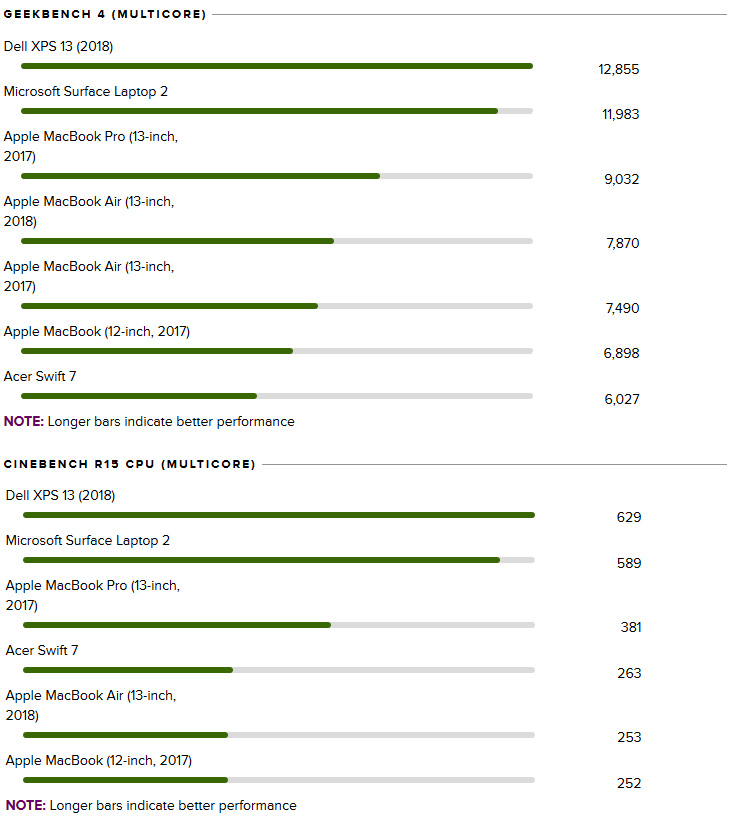
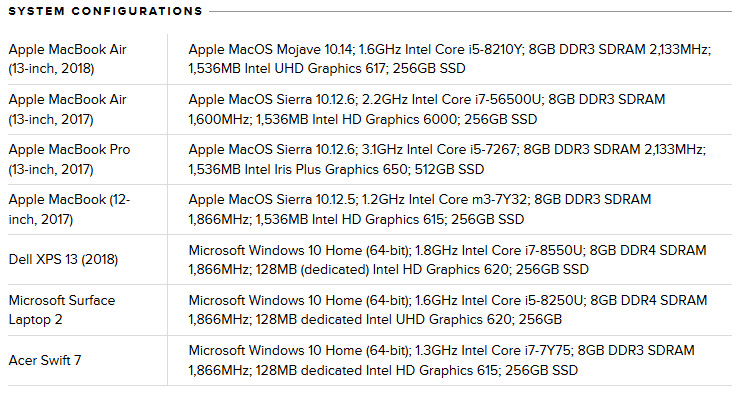
Advantage: MacBook Air 2018, by a hair
More vs. faster connections

In 2018, Apple finally gave the MacBook Air two USB-C ports — a staple of modern Windows laptops. The upside: much faster connections that could output to two 4K screens (or one 5K display). In exchange, Apple took away nearly every other port the 2017 MacBook Air had: two USB 3, one Thunderbolt 2, a SDXC card slot and a DisplayPort, used to connect to an external monitor.
The new MacBook Air has only the two USB-C ports, one of which is used to connect its power adaptor, making a USB hub all but mandatory. It also means that the new model doesn’t have the older model’s MagSafe connector, which I love. If you accidentally trip on your power cord, it simply detaches — instead of pulling your laptop off the table and on to the floor. I believe that this one feature has saved me hundreds, if not thousands, of dollars over the years.

Advantage: MacBook Air 2017
Battery life
Battery life has always been super solid on the MacBook Air though a number of Windows and Chrome-based laptops have pulled ahead. Still, among the 2017 and 2018 MacBook Air, battery life is basically a wash. You can expect 10-plus hours from both machines — good enough for a full day or work and then some.
Advantage: Neither
Everything else
The new MacBook Air has a few other new noteworthy features. Touch ID, which lets you log in with your fingerprint, is handier and more secure than typing in a password. It also has three microphones compared to the older model’s two. Both have stereo speakers, though the 2018 MacBook Air’s are better positioned, running along each side of the keyboard. None of these are significant enough to sway a buying decision, but give the newer model a few bonus points.

Beyond that, the two models are largely the same. The new MacBook Air is a bit more compact and a few ounces lighter. But both have the same operating system, the same 720p FaceTime camera and the same 3.5mm headphone jack.
Advantage: MacBook Air 2018
The verdict

I’ll concede that the MacBook Air 2018, on the strength of its superior Retina display and supremely elegant design, is the better laptop. But starting at $1,199, I don’t believe that it’s the better deal. That designation still belongs to the MacBook Air 2017 — especially if you can find it for under $900 — which retains critical advantages with its keyboard and connections.
The good news: depending on whether you’re optimizing for performance or price, there’s a MacBook Air for you.


